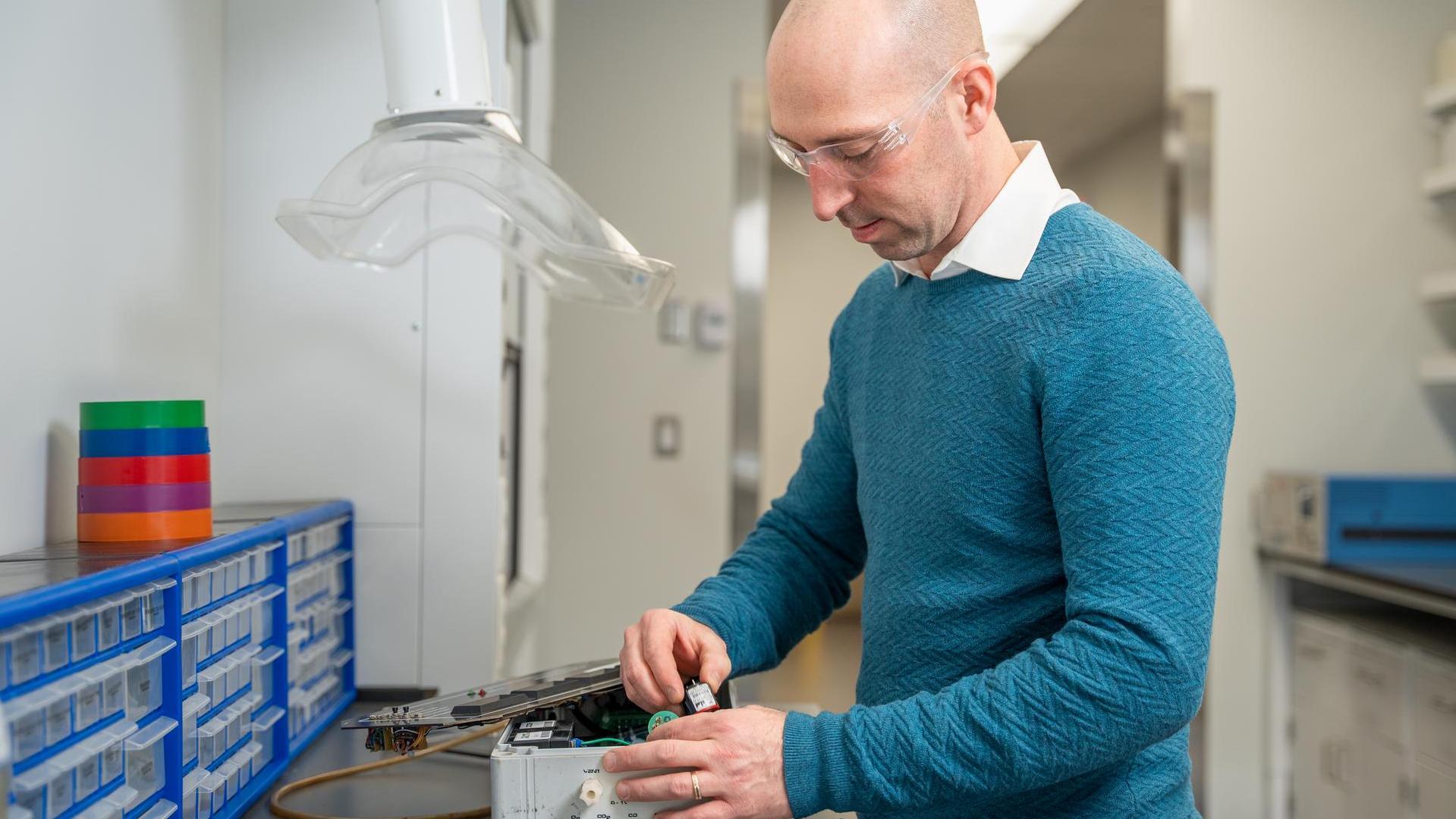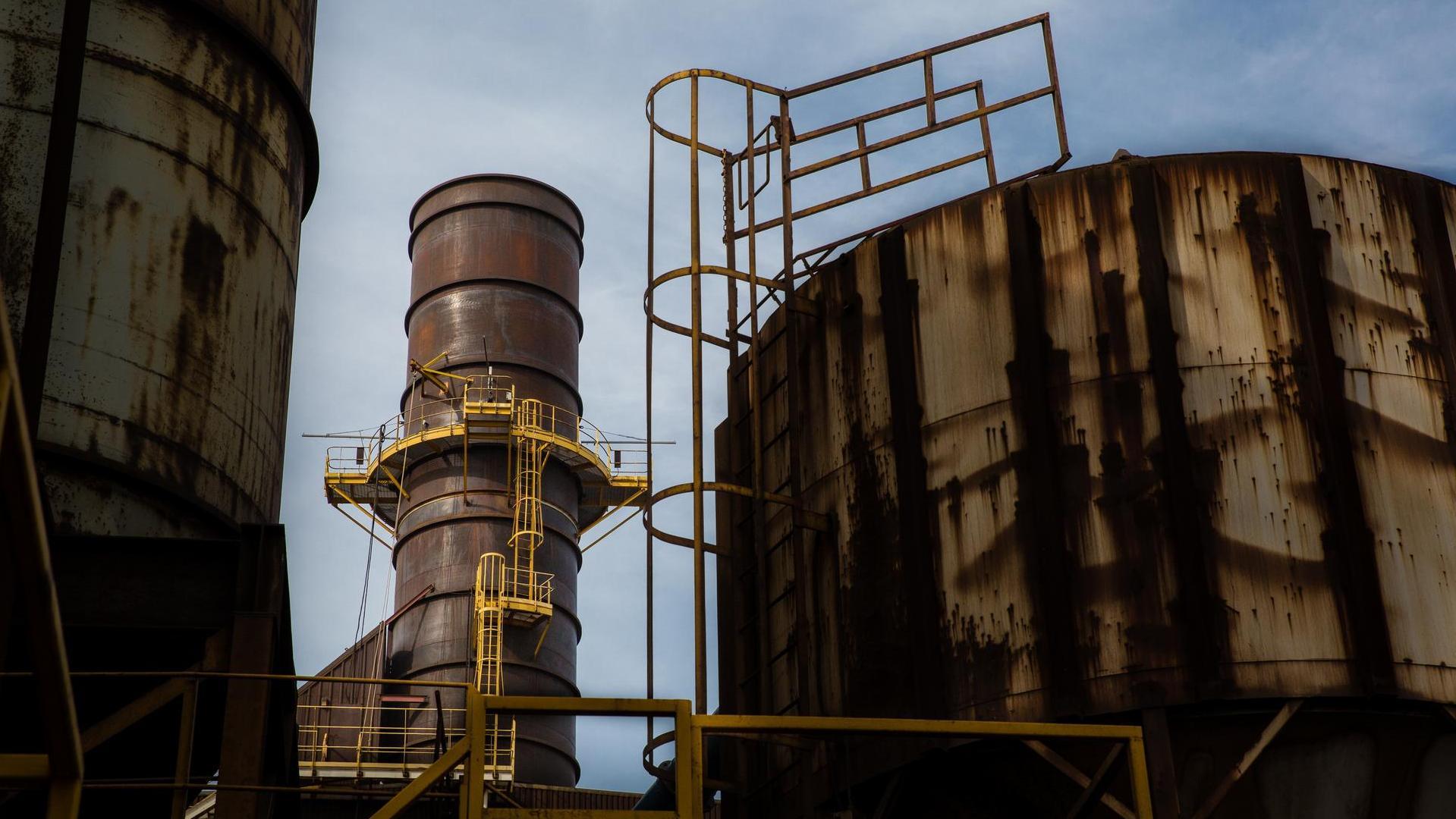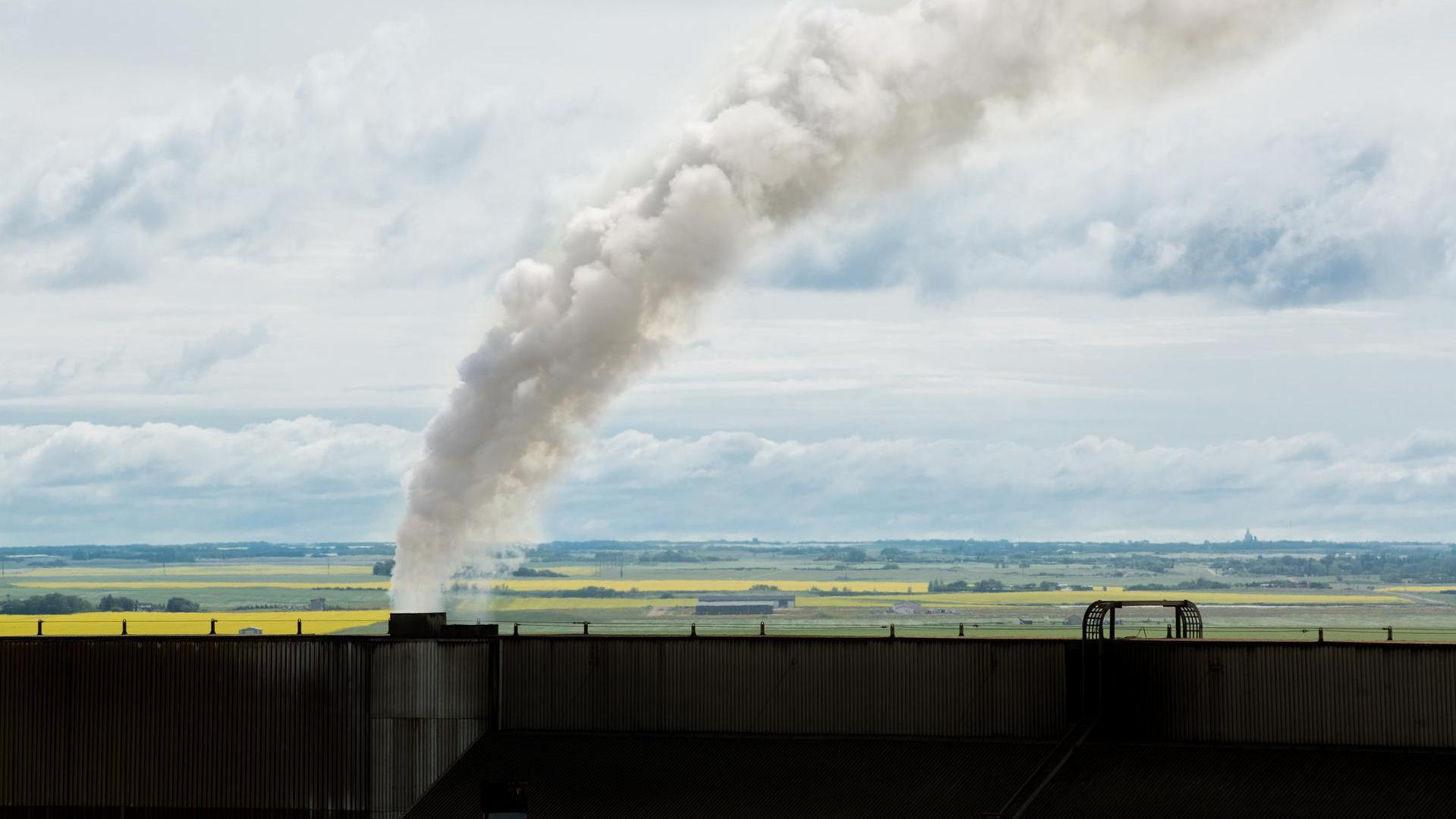
From potash to oil and gas to manufacturing, industrial air quality measurement and monitoring has historically focused on reporting for regulatory purposes, with an end goal of protecting people and the environment.
With industry and government focusing more on improving the environmental performance of industrial facilities, the ability to measure, monitor and model air quality is important to reporting and delivering on these goals.
In the last decade or so, many operations have stepped up to the challenge and are employing new technologies and optimizing their processes, signalling that specialized air quality expertise, beyond just measurement, is needed to work on these more complex projects. Understanding the data and how to use it for a specific operation requires experience and technical know-how.
For over 45 years, the Saskatchewan Research Council (SRC) has helped important economic sectors operating on the Canadian Prairies keep a close eye on their air emissions to ensure they meet environmental standards and regulatory requirements, as well as to implement process improvements for emissions reduction strategies.
With more than 17 years of experience in air quality at SRC, Team Lead Kent Orosz is at the helm of a group of specialized experts who—through measuring, monitoring and modelling—help clients achieve long-term environmental and economic benefits.
“Our team is quite diverse in terms of skills and expertise,” Orosz said. “We offer a variety of services that can be integrated to meet a client’s needs.”
The air quality team offers a wide range of services, from industrial source testing to ambient air monitoring and industrial hygiene, for a variety of industries, such as mining, manufacturing, biofuels, construction and electricity generation.
“While stack sampling makes up the majority of our work,” Orosz said, “we also work with clients on other aspects of measurement and monitoring, such as environmental protection plans under the Industrial Source (Air Quality) chapter of the Saskatchewan Environmental Code.”
Expertise in Safe Stack Sampling

With highly trained and highly experienced team members, SRC is a trusted provider of stack sampling on the Prairies. And while technology has changed, manual testing methods remain the most reliable approach to stack sampling.
“Stack sampling is a unique job because it’s a mix of labour, very technical work and some science as well,” Orosz said.
A typical field day starts with an early morning trip to an industrial site. The team carries in a lot of heavy equipment and gets to work measuring the gases and particulates released from the facility.
The team might climb ladders to reach high platforms or rooftops and then pull their equipment up with a rope or carry it up many flights of stairs, often through a hot, noisy, dusty or dark facility. Once on the roof or platform, the team carries out their work, rain or shine, so long as the work can be conducted safely.
“Safety is an overriding priority at SRC,” Orosz said. “Because our work exposes us to numerous hazards, we are continually assessing and reassessing risk, implementing controls and monitoring whether our controls are effective to ensure we can finish the job safely. We are COR-certified, which is the industry standard in safety certification.”
Orosz has seen his fair share of challenges.
Between equipment breakdowns, facility operational issues or inclement weather, many factors can delay the team’s work. Orosz said the team excels at developing quick but effective solutions that are safe and keep the job moving.
Insight into Process Refining and Pollution Control Equipment
Generally, large facilities are required to test what is emitted from their stacks annually. SRC’s air quality team conducts this regulatory compliance testing at field sites. To help clients reduce their emissions, the team also works with their clients to refine their processes or test new types of pollution control equipment.
“Helping clients implement process improvements that reduce their air emissions is where our expertise really shines,” Orosz said. “Our expertise is unmatched in the province. A lot of companies can come in and do compliance testing, but we are able to take the data and use our air quality expertise and experience to help our clients improve their processes and navigate next steps.”
The potash industry is one place where this expertise has proven valuable.
SRC works with nearly every potash mine in the province, conducting stack sampling, compliance testing and creating or updating environmental protection plans (EPPs) under the Saskatchewan Environmental Code’s Industrial Source (Air Quality) chapter.
“Potash mining requires complex processes related to air emissions,” Orosz said. “We have the skills, expertise and knowledge to give industry the information and resources needed to help them improve the environmental performance of their operations.”
Beyond testing and providing air quality reports, the team has measured dust from mine ventilation exhaust, sampled particulate and gases in stacks from dryers and other process equipment, and measured airflow, temperatures and pollutant rates entering and exiting pollution control equipment.
“We’ve worked on a lot of different issues related to elevated emissions,” Orosz explained. “Based on the data we measure, we can help a facility develop and implement a test plan based on their operational conditions, giving them the information they need to make informed decisions.”
Integrated Services for Managing Air Emissions

SRC provides clients with integrated services and advanced technologies that all work towards a goal of helping them manage their air emissions.
SRC can deploy customized mobile stations for ambient air monitoring, offering real-time data to clients. These stations can monitor gases like sulfur dioxide, hydrogen sulfide, carbon monoxide and weather data, such as wind speed and direction, temperature and more.
With services like trace analysis testing, SRC can measure the amount of volatile organic compounds, total hydrocarbons and metals in emissions. And, when it comes to indoor air quality, Orosz and his team can identify and measure gases, fumes and biological hazards—like mold or bacteria—that can impact the health and safety of employees.
The team has also taken the guesswork out of other monitoring services, such as measuring the visual opacity of emissions plumes.
“There are regulations and limits on how much light is blocked by the plume, so measuring that is very important,” Orosz said. “Traditionally, someone would stand there watching the plume and record the percentages of light blocked every fifteen seconds for fifteen minutes straight.”
SRC has adopted a more accurate and more automated method to measure the opacity by using digital cameras that automate the analysis, providing precise data for clients.
Orosz has also witnessed big shifts in the government’s approach to regulating industrial activities. Saskatchewan has been a leader in a measurable, outcomes-based approach that benefits both industry and the environment.
Part of that approach has been the requirement for industries to develop EPPs under the Industrial Source (Air Quality) chapter of the Saskatchewan Environmental Code.
Having worked with Saskatchewan industries for decades, SRC is well-positioned to help industries develop an EPP that works for them.
“We can take all of our stack sampling knowledge and all of our air dispersion modelling capability and roll it into an EPP for our clients,” Orosz said. “Our work is not just about taking a sample—it’s understanding what our clients’ needs are and what information they require to make operational decisions.”
From Summer Student to Team Lead
Orosz started his career with SRC in 2006 as a summer student and after graduation, joined SRC full time in 2008.
“I started with the air quality team as an associate scientist,” Orosz said. “At the time, I did a lot of glassware washing, data entry and calculations, some reporting and a lot of fieldwork.”
Now as the team lead, Orosz said that he still does a lot of the same work but from a different perspective, with a focus on helping team members reach their full potential. Orosz loves what he does, especially helping clients solve challenges they didn’t even know they had.
With a chemistry degree from the University of Saskatchewan and a chemical technology diploma from Saskatchewan Polytechnic, Orosz has both technical skills and a deep knowledge base that makes him an expert in his field.
“My chemistry degree taught me how to learn new and sometimes abstract concepts and to think outside the box,” Orosz said.
Safety has played an important role in Orosz’s life, not only at work, but in his personal life too. For nearly a decade and a half, Orosz volunteered with Saskatoon Search and Rescue and collaborated with emergency response organizations across the province. His volunteer work culminated with receiving the Queen Elizabeth II Platinum Jubilee Medal in 2022.
Helping to Keep Prairie Skies Clear

With decades of experience, SRC’s air quality experts are working with industry to protect the environment, improve the quality of our air and provide companies operating on the Prairies with the support and resources they need.
Our team works closely with our Environmental Analytical Laboratories on field sample analysis and our Centre for the Demonstration of Emissions Reductions (CeDER) platform to support clients in transitioning to a low-carbon future.
The integrated services offered by SRC ensure that clients are receiving accurate and timely data and are informed about their operations’ performance. SRC works with clients to provide them with a plan to improve their air emissions processes and help them meet their environmental performance goals.
